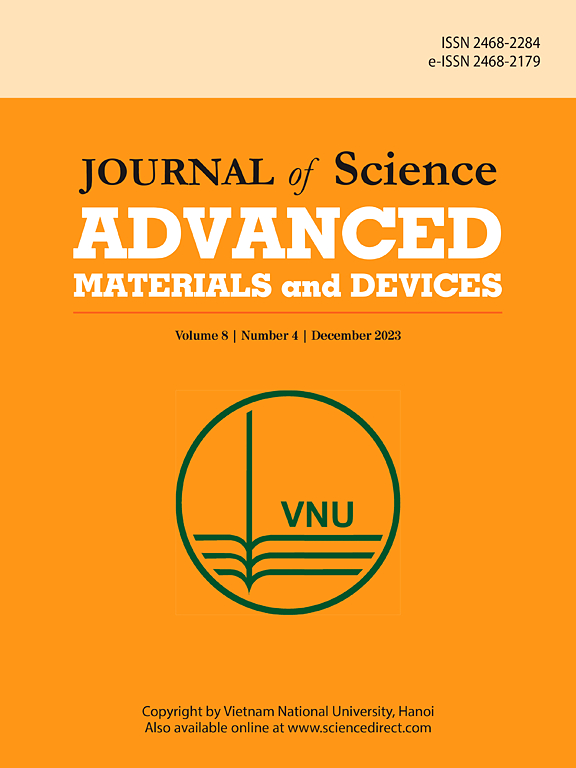Si/Pyrex glass and poly(dimethylsiloxane)-based microfluidic devices with integrated heating elements for TiO2 nanoparticle synthesis
IF 6.7
3区 材料科学
Q1 MATERIALS SCIENCE, MULTIDISCIPLINARY
Journal of Science: Advanced Materials and Devices
Pub Date : 2025-03-18
DOI:10.1016/j.jsamd.2025.100877
引用次数: 0
Abstract
This paper presents two microreactors used to synthesize titanium(IV) oxide (TiO2) nanoparticles. The microreactors under investigation incorporate integrated heaters and possess distinct microchannel dimensions. The first microreactor comprises silicon and Pyrex glass, with its integrated heater produced through p-type diffusion. Conversely, the second microreactor is constructed from polydimethylsiloxane (PDMS) and features a wire-based integrated heater. Recognizing the significance of temperature control in the synthesis process, both experimental and simulation results pertaining to the behavior of the microreactor heaters are provided. The synthesis of TiO2 nanoparticles serves as a means to validate the efficacy of the microreactors. Comparative analysis reveals that the PDMS microreactor exhibits superior functionality when compared to the silicon/Pyrex glass counterpart. It has been demonstrated that upon a reaction time of 2 min within the microreactors, amorphous nanoparticles are formed, accompanied by partially developed crystallites corresponding to the anatase and rutile phases. Subsequent heating facilitates the complete conversion of the amorphous phase into the anatase phase. The utilization of a PDMS microreactor exhibits a heightened suitability for the synthesis of TiO2 nanoparticles with good photocatalytic efficiency, achieving 93.59 % methylene blue (MB) degradation after 90 min. This suitability arises from several key factors: enhanced production speed, the cost-effectiveness inherent in the material, and the prevention of channel blockage attributed to calcification during the reaction process.

求助全文
约1分钟内获得全文
求助全文
来源期刊

Journal of Science: Advanced Materials and Devices
Materials Science-Electronic, Optical and Magnetic Materials
CiteScore
11.90
自引率
2.50%
发文量
88
审稿时长
47 days
期刊介绍:
In 1985, the Journal of Science was founded as a platform for publishing national and international research papers across various disciplines, including natural sciences, technology, social sciences, and humanities. Over the years, the journal has experienced remarkable growth in terms of quality, size, and scope. Today, it encompasses a diverse range of publications dedicated to academic research.
Considering the rapid expansion of materials science, we are pleased to introduce the Journal of Science: Advanced Materials and Devices. This new addition to our journal series offers researchers an exciting opportunity to publish their work on all aspects of materials science and technology within the esteemed Journal of Science.
With this development, we aim to revolutionize the way research in materials science is expressed and organized, further strengthening our commitment to promoting outstanding research across various scientific and technological fields.
 求助内容:
求助内容: 应助结果提醒方式:
应助结果提醒方式:


